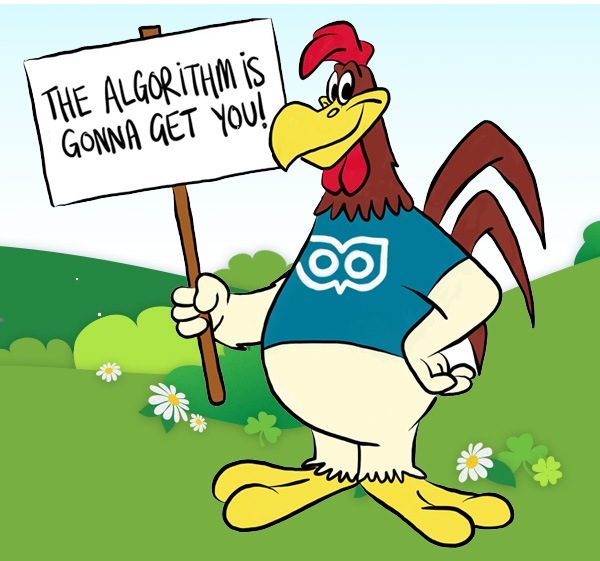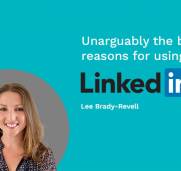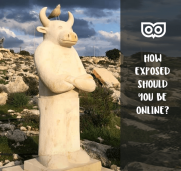
How to make the most of inbound versus outbound marketing
The algorithm is going to get you
Our playing field is perhaps not levelled when it comes to digital marketing, but if you’re willing to put the time and effort, you can get meaningful results. And, we’re here to help look over your shoulder if you feel stuck.
You hear all these things about algorithms – Facebook only shows you 6% of the posts from pages you’ve liked, that you get fed tweets from the people who you interact with the most, and while you are online you are shown ads that relate to your behaviour.
Personally, this doesn’t scare me, it’s the internet tailoring things for my tastes.
As a business, good quality relevant content is a must to give the right first and ongoing impressions – and then you can “pay to play” to increase your odds of being seen by your target audience. That’s how you work the system!
First some basics:
Inbound Marketing: This is when you publish and post things that are useful to your audiences. It includes blog posts, YouTube videos, Instagram posts, Tweets, LinkedIn status updated, LinkedIn blog posts, and Facebook posts.
Outbound Marketing: This includes ads – print and digital – banner ads, paid links to landing pages, and sponsored social media posts.
What’s better? I think start with Inbound and then graduate to Outbound. This shows people who see you online to see you as an active business who cares about the impression they are giving, and makes an effort to be helpful to others online.
How people fail:
So many people skip important steps in their marketing, and then wonder why things fail when they spend money on paid Google ads, remarketing, Facebook advertising and social media sponsored ads. I am in favour of outbound marketing but several steps should be taken first.
I don’t want to be a spoilsport, but if you spend money on paid ads and you attract traffic to your social pages, you need to make sure your house is in order.
Here are the steps you need to do before you start paying for ads.
Setup – Social Profiles:
- Make sure you have a well-designed banner that is in keeping with your brand. This should not be your logo repeated, but rather an image which works well in the wide rectangle shape typical of banners on LinkedIn, Facebook and Twitter. On Instagram, it’s not needed.
- You will also need a properly sized profile picture – on LinkedIn, Facebook, Twitter and Instagram. Follow the size recommendations for that particular channel. If you are using a picture of yourself, choose a professional one with no one else in the picture. It’s a worthwhile investment hiring a good photographer for this.
- About Blurb/Intro Bio/Description/Summary: Each of the 4 above mentioned channels has a place where you can write a brief description about you/your business. On LinkedIn you need to write a few paragraphs in the first person about what you bring into any role you have in your career. On Twitter you get 160 characters, and on Instagram you get 150 – so choose carefully. On Facebook, the “About” section is a constant factor, so make the most of it and fill it out properly.
Setup – Blog:
I am a big fan of blogging if you have a business. Blogging helps to drive traffic to your website, makes your site better for search engines and gives you a place to show personality and be more interesting in terms of what you share on social media.
A blog section on your website gives you lots of flexibility – you can use it for embedded videos or Instagram posts, embedded infographics, and written articles. Its like the home for the continuously updated part of your website. You can mix up your topics and include how tos, step by step, myth busting insight, list and collection posts, what you’ve learned from various experiences, why you do things, and case studies). Get your blog integrated into your site and publish around 3-5 posts to get started – with good variety. Feel free to send me the link and I can give you feedback! I want you to get this right.
Activity:
Once you have this setup, you need to have a good amount of recent posts. This way, anyone visiting your social profiles can scroll through the latest posts, and get a good sense of what you’re like, what you do, and what you’re into. Each post you publish should have 3 key factors:
- Helpful or at least Entertaining – Everything you share must have some value to your audience – you could be sharing an article giving advice, or a stat, or a link to an infographic.
- Design: If you are sharing an image, choose wisely. If you have made a branded sharable image, be sure you follow best practices in design. If you are sharing someone else’s image, give credit to them by mentioning or tagging them.
- Copywriting / captioning: Where you have the space, use it! An image shared on Facebook, LinkedIn or Instagram should have a caption written showing people the relevance of that post to you and your business. If you are sharing a link or an image on Twitter, you get 140 characters to work with – use proper English, some but not too many hashtags, and tag other Twitter users where possible.
But I’ve already done all this!
You have? Great! Then you’re ready to pay for your ads. I just wanted to make sure you are ready to graduate. Here are my tips for getting started with paid advertising.
- Experiment with small costs, and watch the results. You can spend, for example, 8 dollars on Facebook targeted ads to display an ad to 11,000 people. Each ad and demographic is different.
- Mainstream choice: For your paid content, choose a post with wide mainstream reach and appeal. For example, rather than a group shot of you with a client/team member, choose a shared quote/stat or post which you know will be of value or amusement to a lot of people.
- Review results: Pay attention to what has gotten the most engagement (clicks/comments) and compare your results with other pages and profiles in your industry or targeting the same types of people. You will then be able to tweak your ads and improve your results.
Picture Credit
Rooster pic: In honour of the Year of the Rooster (see our blog post about what it means for business) we had Nick Thompson from Thumbs1 create this illustration for us!


